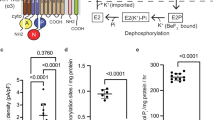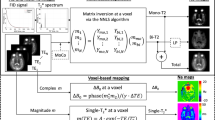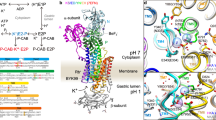Abstract
IF the ionic pump in the red cell membrane expels three sodium ions and takes up about two potassium ions for each molecule of adenosine triphosphate (ATP) hydrolysed1–5, under physiological conditions the free energy available to drive the reaction forwards must be quite small—about 3,000 cal. By arranging that the concentration gradients for sodium and potassium are even more adverse, it should be thermodynamically possible to run the pump backwards and synthesize ATP, though, of course, theory cannot predict that the reaction would occur at a measurable rate. Investigators who have looked for ATP–inorganic phosphate (Pi) exchange associated with “transport ATPase” activity6,7 have never found it, but they have always looked in broken cell preparations where ionic concentrations must be the same on both sides of the membrane and where, in consequence, the free energy change for the overall reaction is likely to be heavily in favour of ATP breakdown. An ingenious attempt to reverse the sodium pump in perfused squid axons failed, but it failed in such a way as to leave the possibility of reversal still an open question8. More encouraging was the finding that red cells with intact membranes show peculiar behaviour when placed in solutions lacking potassium, and the effect of internal phosphate concentration on this behaviour suggests that the final stage of ATP hydrolysis—Pi release—may be reversible9.
This is a preview of subscription content, access via your institution
Access options
Subscribe to this journal
Receive 51 print issues and online access
$199.00 per year
only $3.90 per issue
Buy this article
- Purchase on SpringerLink
- Instant access to full article PDF
Prices may be subject to local taxes which are calculated during checkout
Similar content being viewed by others
References
Glynn, I. M., J. Physiol., 160, 18 P (1962).
Sen, A. K., and Post, R. L., J. Biol. Chem., 239, 345 (1964).
Whittam, R., and Ager, M. E., Biochem. J., 97, 214 (1965).
Garrahan, P. J., and Glynn, I. M., J. Physiol., 185, 31 P (1966).
Post, R. L., and Jolly, P. C., Biochim. Biophys. Acta, 25, 118 (1957).
Skou, J. C., Biochim. Biophys. Acta, 42, 6 (1960).
Fahn, S., Koval, G. J., and Albers, R. W., J. Biol. Chem., 241, 1882 (1966).
Shaw, T. I. (personal communication).
Garrahan, P. J., and Glynn, I. M., Nature, 207, 1098 (1965).
Schrier, S. L., and Doak, L. S., J. Clin. Invest., 42, 756 (1963).
Ronquist, G., and Ågren, G., Nature, 209, 1090 (1966).
Glynn, I. M., J. Physiol., 169, 452 (1963).
Garrahan, P. J., and Glynn, I. M. (unpublished data).
Hoffman, J. F., Tosteson, D. C., and Whittam, R., Nature, 185, 186 (1960).
Järnefelt, J., Biochim. Biophys. Acta, 59, 643 (1962).
Jöbsis, F. F., and Vreman, H. J., Biochim. Biophys. Acta, 73, 346 (1963).
Van Groningen, H. E. M., and Slater, E. C., Biochim. Biophys. Acta, 73, 527 (1963).
Whittam, R., Wheeler, K. P., and Blake, A., Nature, 203, 720 (1964).
Author information
Authors and Affiliations
Rights and permissions
About this article
Cite this article
GARRAHAN, P., GLYNN, I. Driving the Sodium Pump backwards to form Adenosine Triphosphate. Nature 211, 1414–1415 (1966). https://doi.org/10.1038/2111414a0
Issue date:
DOI: https://doi.org/10.1038/2111414a0
This article is cited by
-
Solution of the problem of energy coupling in terms of chemiosmotic theory
Journal of Bioenergetics (1972)
-
Hypothesis for Coupling Energy Transduction with ATP Synthesis or ATP Hydrolysis
Nature New Biology (1971)
-
Net Synthesis of ATP by Reversal of the Sodium Pump
Nature (1970)



